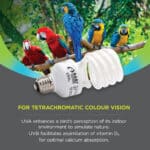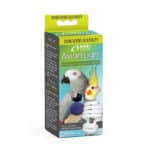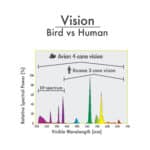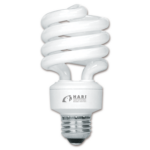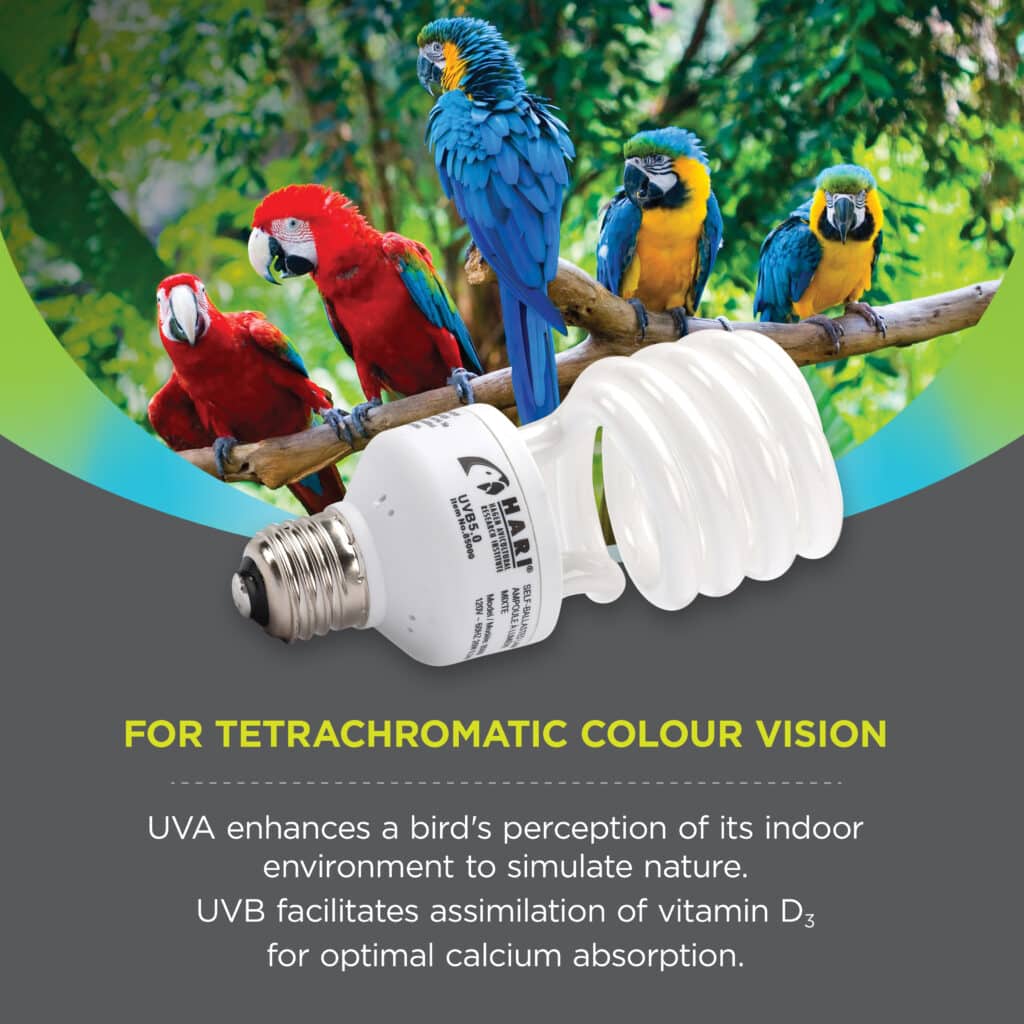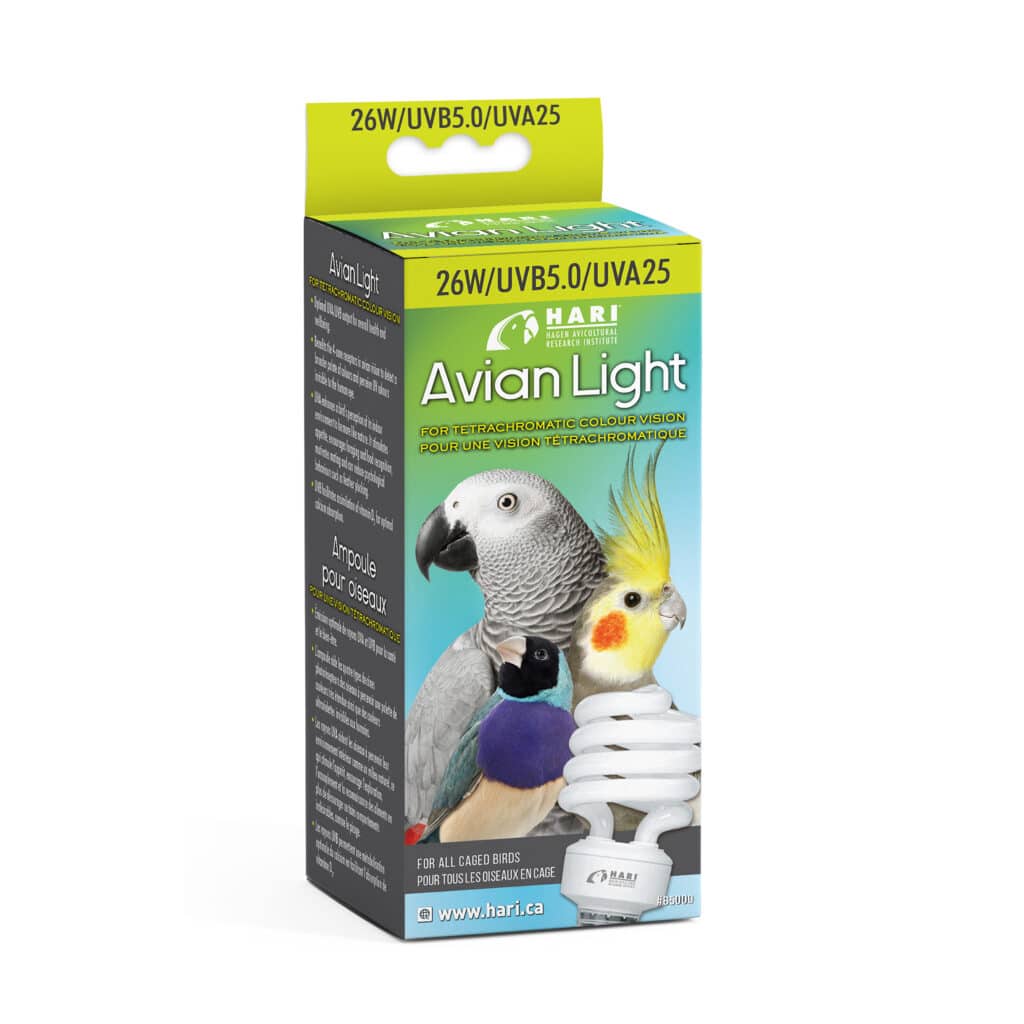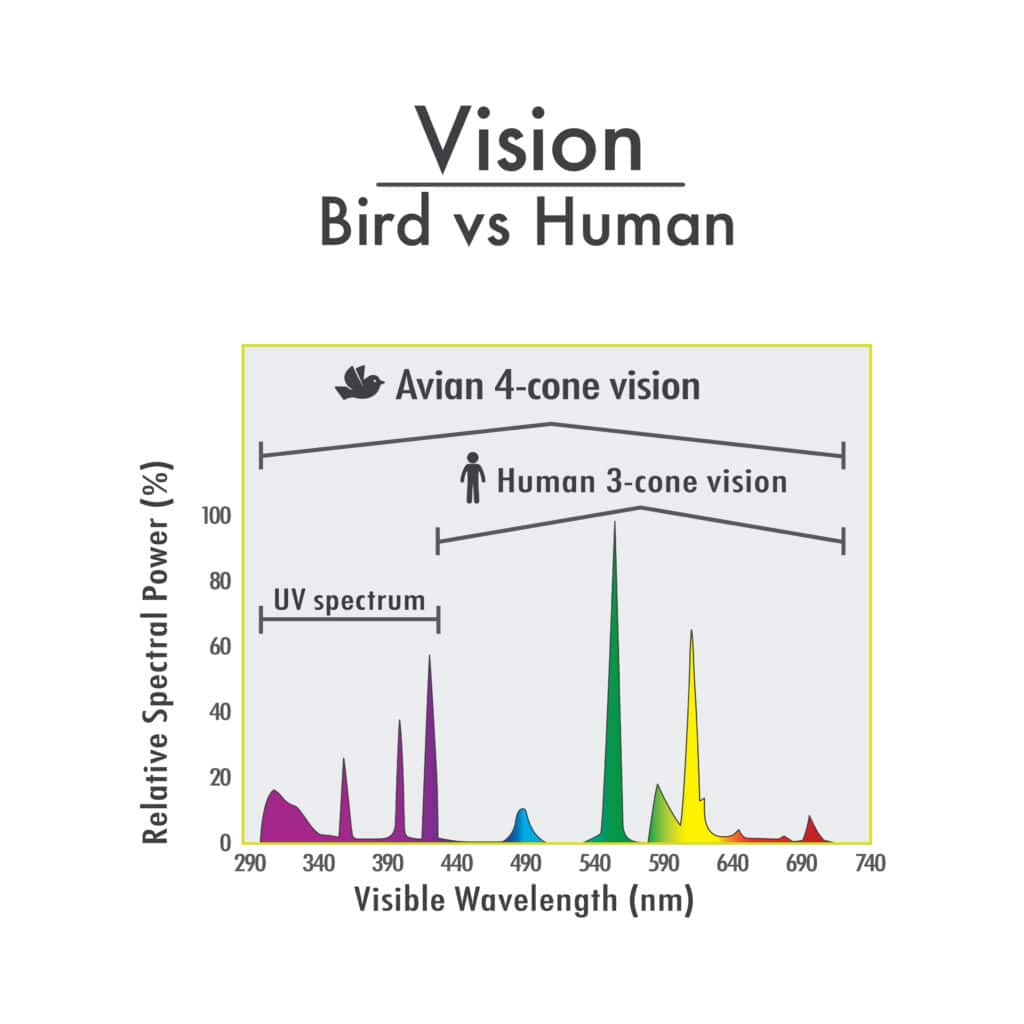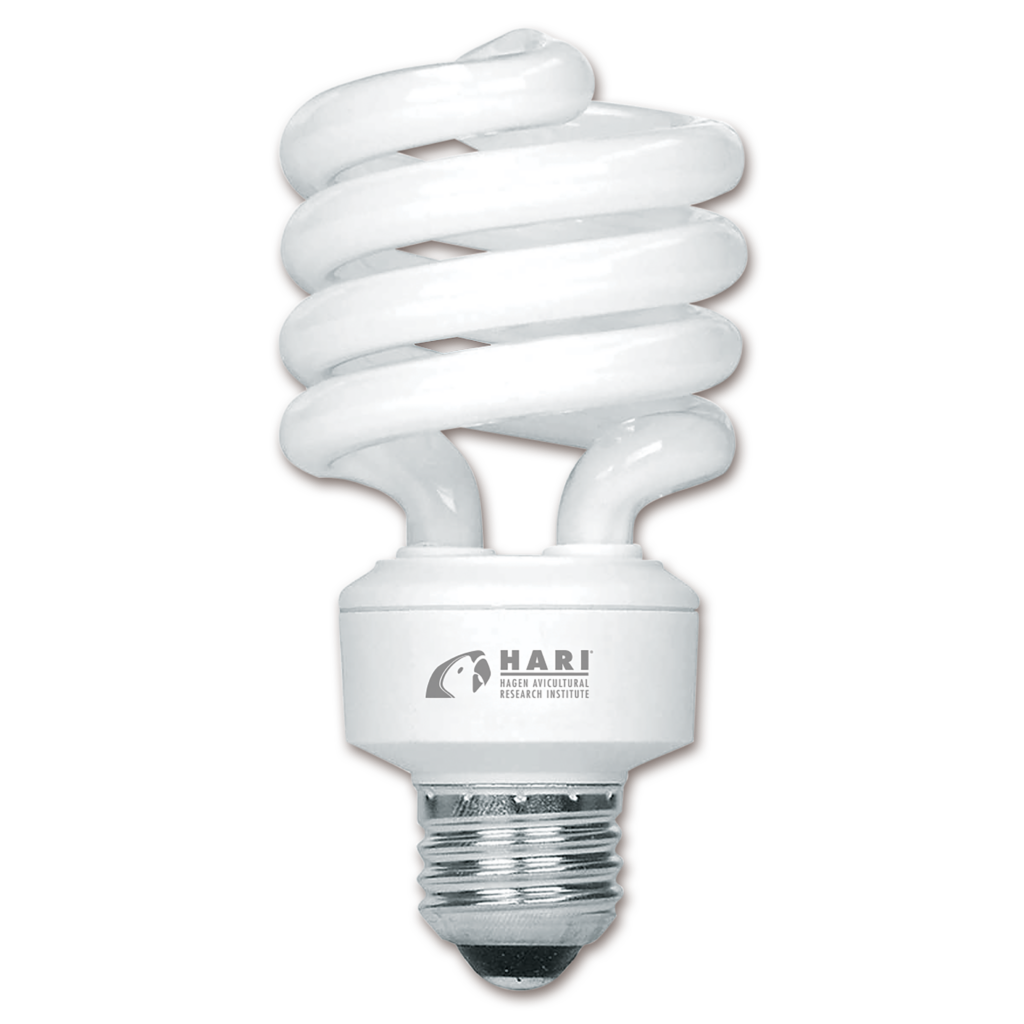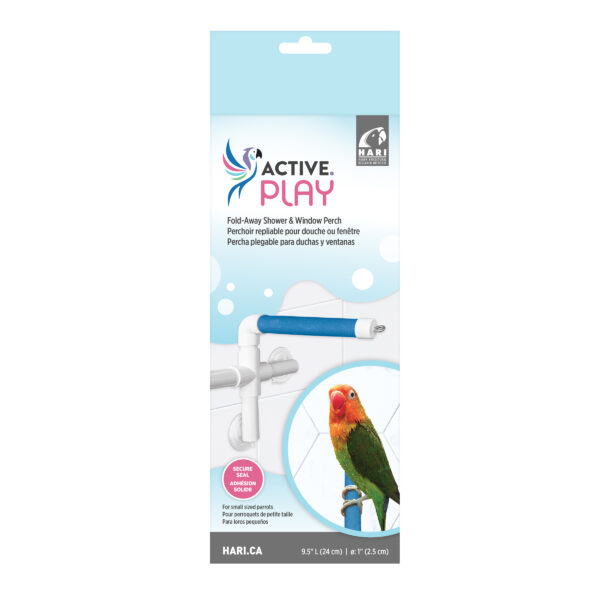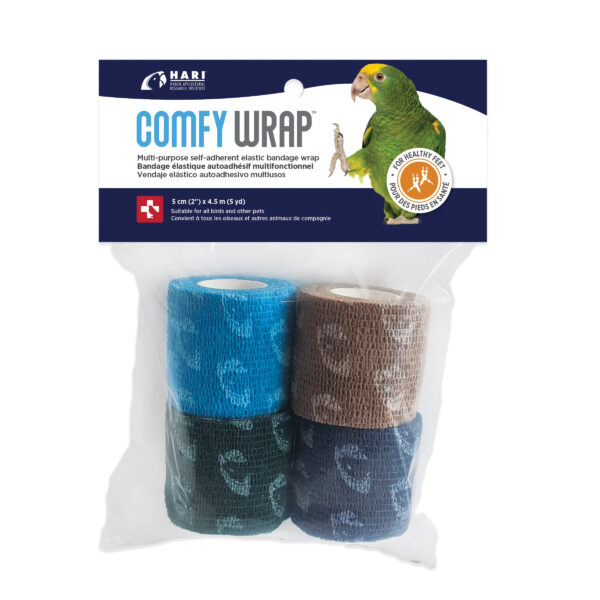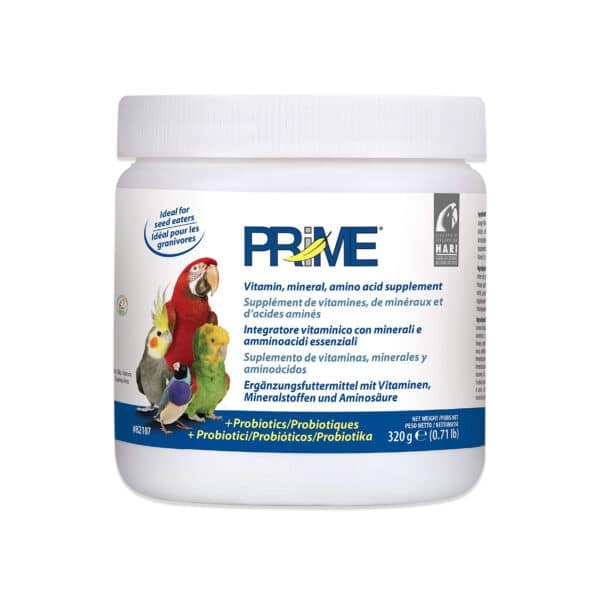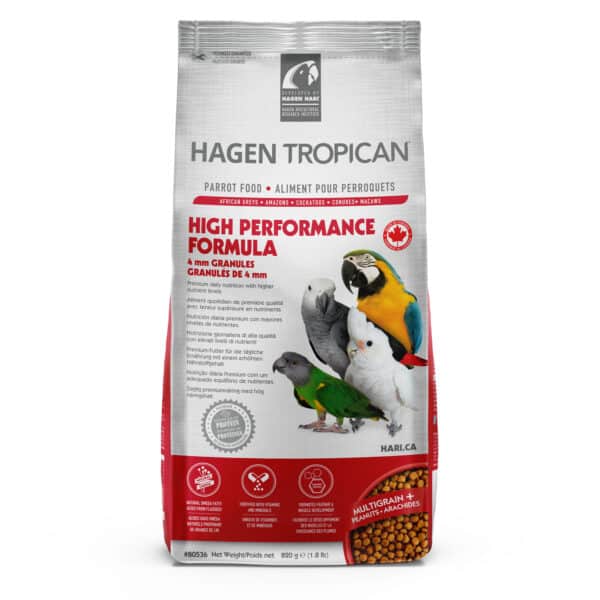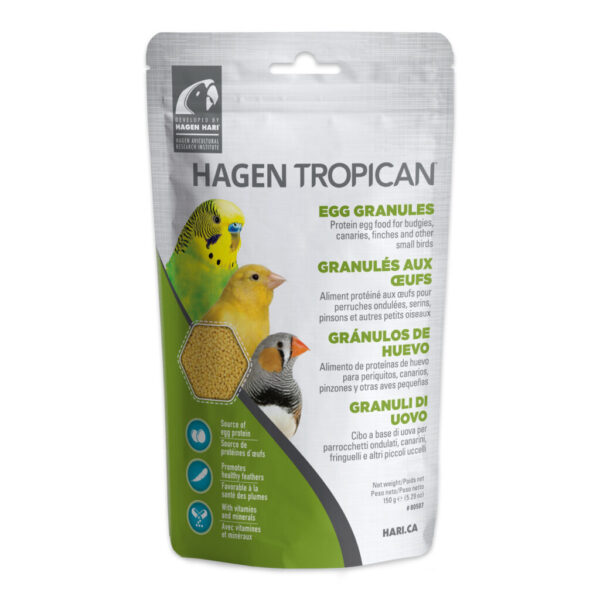Your cart is currently empty!
HARI
Avian Light For Tetrachromatic Colour Vision, UVB 5.0, UVA 25
The HARI Avian Light can help your bird to see more. UVA enhances a bird’s perception of its indoor environment to simulate nature. It benefits the 4-cone receptors in avian vision to detect a broader palate of colours and perceive UV colours invisible to the human eye. It can stimulate their appetite, encourage foraging and food recognition, motivate mating and may reduce psychological behaviours such as feather plucking. UVB can also facilitate the assimilation of vitamin D3 for optimal calcium absorption.
- Benefits the 4-cone receptors in avian vision
- UVA enhances a bird's perception of its indoor environment to simulate nature
- UVB facilitates assimilation of vitamin D3 for optimal calcium absorption
- Energy saver
Reminder! Light and UV radiation in compact fluorescent bulbs decrease over time. Change your UVA/UVB bulb yearly.
Caution: Ensure that electrical cords are out of reach from your bird.
Warning: [Hg] Lamp Contains Mercury. Manage in accordance with disposal laws.
Mercury disposal: lamprecycle.org or epa.gov.
This device is not intended for use with emergency exit fixtures or emergency lighting. Not for use where exposed to the weather. Not for use in totally enclosed recessed luminaires
Properly recycling CFLs according to disposal laws ensures that you and/or waste management workers do not come not in contact with harmful substances contained within the lamp (should the bulb break and harmful substances become exposed, they can be absorbed through the skin or by inhalation). In addition to these safety considerations, that the valuable parts of the lamp, such as glass and metal components, are not lost.
What To Do if a CFL Breaks:
The chemicals inside CFLs can be harmful if a bulb breaks. If you accidentally break a CFL, follow these steps: Put on gloves and a mask to shield yourself from the chemical dust. Collect all broken bits in an airtight container using a damp paper towel. Turn off all central air conditioning and fans for 15 minutes. Take the bulb to a recycling site.
Questions? Our Team of Experts is Here to Help

Ultraviolet Light
How Do Birds Detect Ultraviolet Light?
Cage Lighting
Help your bird see their indoor world as they would in nature
Providing Adequate Cage Lighting For Pet Birds
There are many benefits to providing proper UV lighting to pet birds. By simulating natural sunlight with an Avian Light, for birds that are housed indoors, you are providing environmental enrichment and helping your bird to see his indoor world as it would in nature.
Very often, during the daylight hours, pet birds do not get proper or adequate lighting which can significantly affect their behavior and overall health. Reproduction & hormones, feather vibrancy & structure, sleep cycles & moods are all influenced by light cycles and photoperiods. Proper cage lighting is an essential element that should be considered when setting up your pet bird’s cage.
Birds have tetrachromatic vision, which means that their retinas contain four types of high-intensity light receptors with varying spectra absorption. This enables them to distinguish colours more effectively and see wavelengths and gradations of colour beyond those of typical human vision. Birds also have better visual acuity and can perceive subtle differences between similar colour shades. Humans cannot see what birds can see.
Exposure to natural sunlight is ideal. However, it involves taking your bird outside and this is not always convenient or an option. Simply placing your bird by a window will not work since light filtered through glass loses the necessary wavelengths. The next best thing is to bring the outdoors in! You can do this by setting up cage lighting that emits simulated natural sunlight conditions, including ultraviolet rays.
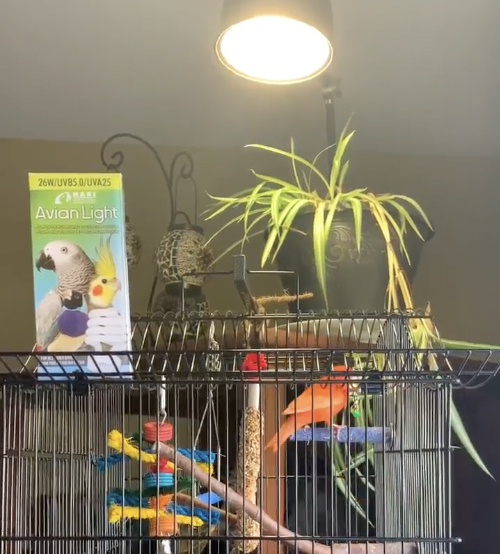
Determining Your Optimal Cage Lighting
To ensure that your caged birds receive the best lighting, it’s important to research their specific species along with the country and climate in which they are typically found. Consider the temperature range for their natural habitat as a guide when setting up lighting for your pets. Here are some additional factors to keep in mind:
Habitat: Birds typically found in dense rainforests will be exposed to many gradients of UV light, with high levels at the tops of the forest canopy and very low UV-levels on the forest floor. In the wild, when at rest, where does your bird’s species spend most of its time?
Time of Day: In the wild, birds will seek out areas of shade to self-regulate or may only spend time in the early morning or late afternoon basking in the sun. The sun is at its highest in the sky around noon. During this time, the sun’s rays have the least distance to travel through the atmosphere and UVB levels are at their highest. In the early morning and late afternoon, the sun’s rays pass through the atmosphere and their intensity is greatly reduced.
Location and Time of Year: The angle of the sun changes with the seasons, causing the intensity of UV rays to vary. UV intensity tends to be highest during the summer months. The southern hemisphere receives more solar energy at the peak of its summer than the northern hemisphere. Peak UV should occur within the tropics (high sun, low ozone), at a high-altitude site, in the Southern Hemisphere.
Weather Conditions and Reflection: If your bird species originate from an area that is typically cloudy, this too plays a big role in the amount of UV reaching them. Some clouds can absorb and reflect 35-85% of the sun’s radiant energy, this can prevent all but a negligible amount of UV from reaching the ground. Some surfaces can reflect much of the UV that reaches them. Because of this, UV intensity can be deceptively high, even in shaded areas.
Ozone: The ozone layer absorbs some of the UV radiation that would otherwise reach the earth’s surface. Ozone levels vary over the year (even throughout the day) and from one geographical location to another.
Cage Setup
Once you have figured out the amount of lighting you need to provide to your species of bird, look at the chart and place the Avian Light at the recommended distance from the top of the cage.
Fixture:
The Avian Light base fits most standard-sized lamp fixtures. We recommend using Exo-Terra PT2055 or PT2057 Light Dome – Aluminum UV Reflector Lamp.
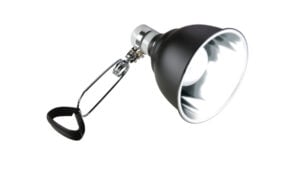
Caution: Ensure that the light is turned off during the night. Every type of bird has slightly different needs but a general rule of thumb is to keep the Avian Light source on for 7 to 9 hours and also provide “down-time” during the day where the bird can seek out some shade and rest, a programmable timer can manage the time rotation.
Always double-check to ensure that any cables & cords are not within reach of your pet birds. Be sure to always provide your birds with an area inside the cage that is shady and away from the source of heat and light.
Distance from Source of Light
85000 (26W/120V/60Hz)
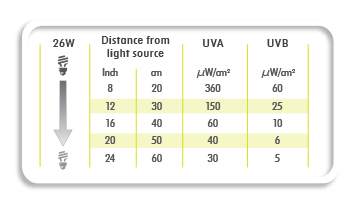
Fluorescent bulbs lose their UV radiation and approximately 50% of their lighting output quality within one year. Changing your Avian Light regularly ensures optimal light conditions and UV radiation to keep your birds healthy.
The Avian Light is a pet care bulb for use with caged birds only!
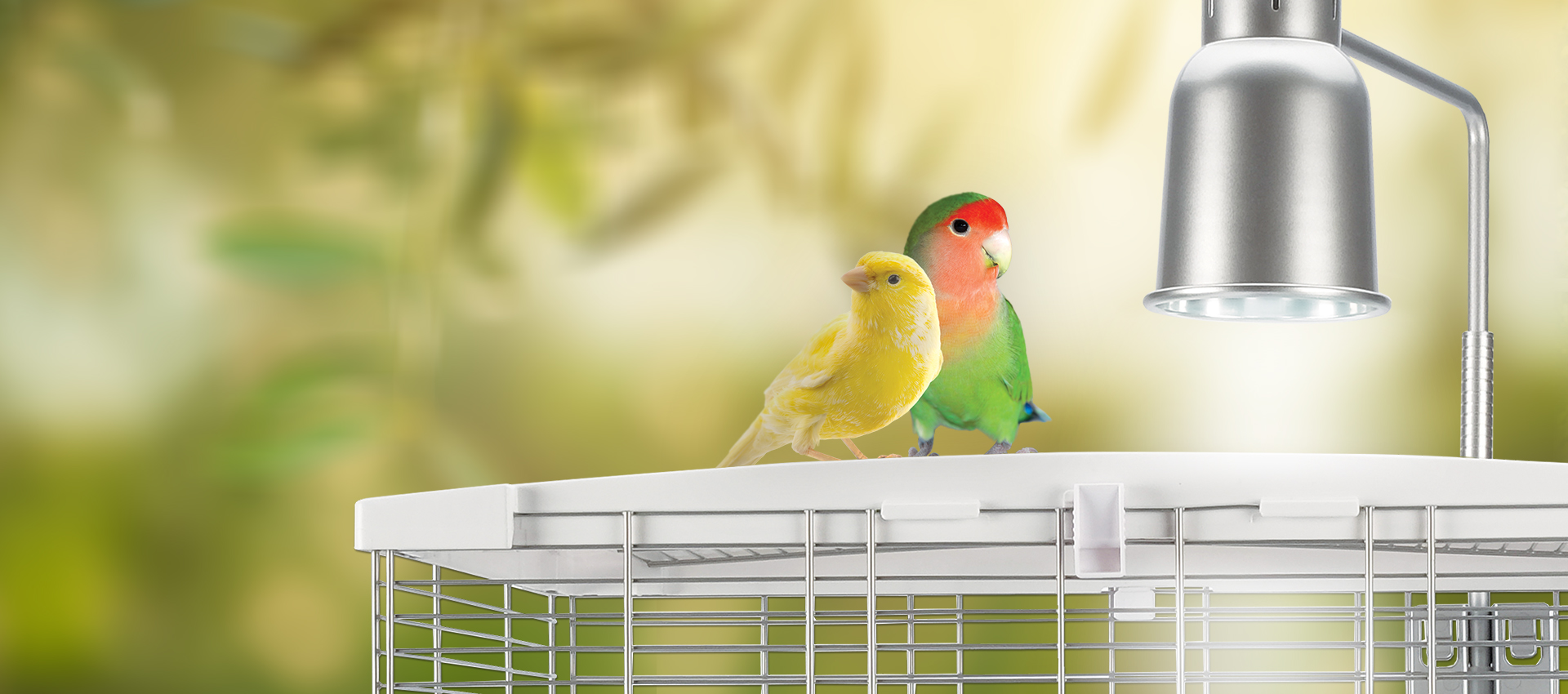
Vision Lighting
Looking for Lighting for your Vision Cage?
